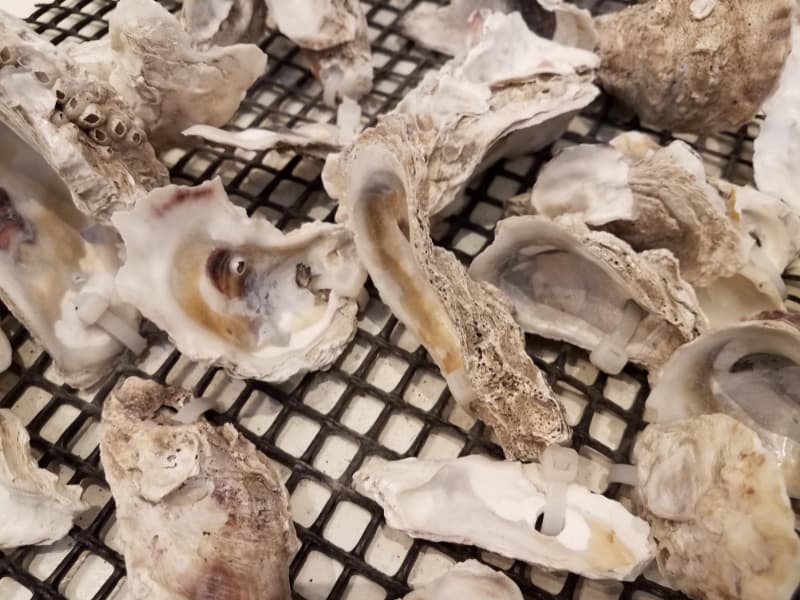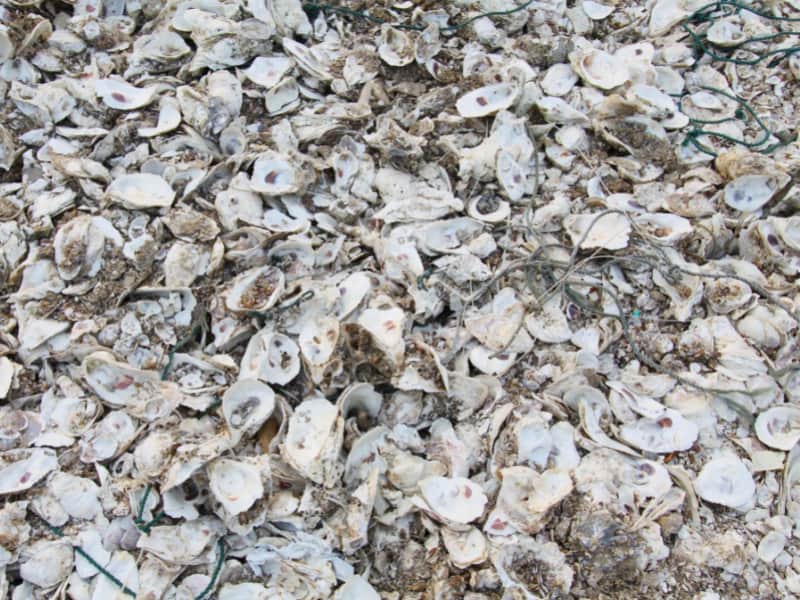Oysters are delicious, but after eating them, what do you do with the leftover shells? Can you compost oyster shells?
In this article, I’m going to teach you how to compost oyster shells. This will allow you to reuse your oyster shell waste as fertilizer for your garden.
It’s a win/win situation because you get to enjoy fresh oysters while helping the environment.
Can You Compost Oyster Shells?
Yes, oyster shells are organic, so you can compost them. Nearly everything organic can be composted. Not only can you compost oyster shells, but any shellfish shells should be composted for their numerous benefits.
Oysters have been around for millions of years and they’re still being eaten today. They’re considered an aphrodisiac in many cultures. The shells that come from eating oysters are actually very useful. The shells can be used as a natural fertilizer for plants or even as mulch.
Oyster shells will take about 3-6 months to decompose in small pieces. In order to help speed up the process, it is recommended to crush them into small pieces to decompose more quickly in your compost pile. Whole shells will take a much longer time to decompose.

Benefits of Composting Oyster Shells
Oyster shells can be beneficial in various ways. Their nutrient content makes them ideal for use as a mulch or a fertilizer, as well as for adding to compost.
The shells can balance overly acidic soil and acidic compost due to the alkalinity of their calcium carbonate content. Although they contain carbon, their nitrogen content means they are classed as green materials.
They contain the organic polymer chitin, which slowly releases the nitrogen as it breaks down. This slow-release sets them apart from nitrogen-based chemical fertilizers, which tend to leach into the water table.
Another benefit of oyster shells is that they contain much-needed calcium. Calcium can improve plants’ health, strengthen plant cell walls, and a wide range of plants will benefit from a calcium boost.
You can use them as a mulch around flowers or alkaline-loving vegetables. You can also soak the oyster shells in water to create a fertilizer that is rich in calcium.
A mulch of crushed shells will quickly release the minerals into the soil. You can opt for a slower release of minerals and use whole shells as a decorative mulch for potted plants and borders.
Garden pests like slugs and snails dislike crawling over crushed oyster shells, so they can discourage these destructive critters from getting to your plants.
Shards of oyster shells can also be added to potting mixes to aid drainage.
Preparing Oyster Shells for Composting
As whole oyster shells can take a long time to break down, it is beneficial to prepare them properly before putting them in your compost.
- Clean the oyster shells thoroughly – Any bits of meat, oils, or sauce still stuck to the shells can attract pests. Also, because excess salt in your soil can damage your plants, a proper cleaning will ensure any salt residue is washed off.
- Crush the oyster shells – The safest and easiest way to do this is to place them on a hard surface. Either cover them with a cloth or put them in a bag first to stop the pieces from flying up. Then hit them with a hammer or a heavy rolling pin. Continue hitting them until they are broken into small pieces. Then gather the pieces to add to the composter.
- Mix in the oyster shells – When you add the smashed shells, mix them into your compost pile to ensure they break down as quickly as possible. Alternatively, you can add them to the center of your pile or cover them with compost.

Where Can You Get Oyster Shells?
Obviously, the main way people get oyster shells to compost is to use shells left over from eating oysters! The main thing to remember is to clean the shells thoroughly and remove any food residue before crushing them. Of course, the best reason to add oyster shells to your compost is that you have leftover shells from an oyster feast.
However, perhaps you are not an avid seafood fan, and the idea of chowing down on oysters isn’t your idea of a great meal. Don’t worry, because there are several places you can source these calcium-rich shells to be used in your garden.
Although it might be tempting, you should not collect oyster shells from the beach. Shells are essential for the ecosystem, and excessive shell collection can have numerous detrimental effects.
Oyster shells can be easily obtained from your local seafood restaurant or fish market (fishmonger), who may be able to supply you with shells they have leftover. If you live near a fishing port, you will probably have plenty of opportunities to get your hands on some oyster shells.
If you live inland, crushed oyster shells are available online for gardening purposes, like these on Amazon.
However, suppose you are having difficulty sourcing oyster shells. In that case, other shells can provide similar benefits, and this is not just restricted to seashells, as eggshells and snail shells give similar results.
My advice is that you don’t need to go out of your way to get them. If you have leftover oyster shells, add them to your compost. The thing I like most about making my own compost is that it helps reduce kitchen waste, and it is a free way of feeding your garden.
Can You Compost Oysters?
In traditional compost piles, it’s not a good idea to add oysters because they can attract unwanted pests and pathogens. However, there are different compost methods that will allow you to effectively compost oysters.
Modern composting has come a long way from traditional composting methods. While ordinarily composting oysters or any other kind of meat would be a definite no-no due to not wanting pests and pathogens in your compost.
Nowadays, however, many composting systems enable you to compost things that you would leave out of a conventional composter.
Sealed hot composters, electric compost machines, the Compot system, or a fermentation composting process such as the Bokashi system will enable you to compost oyster meat, depending on the manufacturer’s recommendations.
Composting Oyster Shells Final Thoughts
If you want to make sure that your garden and plants receives enough calcium, then adding oyster shells to your soil is a great option. They’re easy to obtain, and they are also one of the easiest ways to ensure that your plants receive their calcium and other nutrients.
For more on compostable materials, check out these articles:


